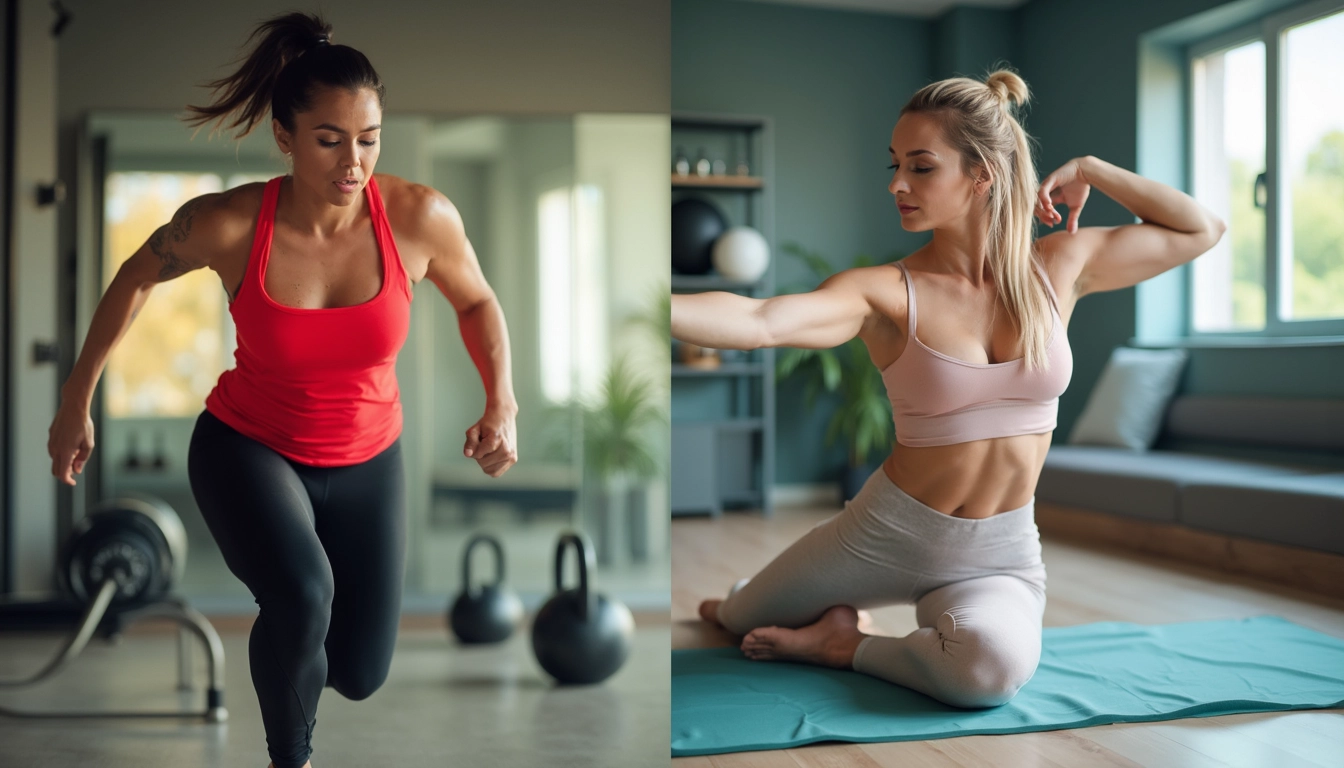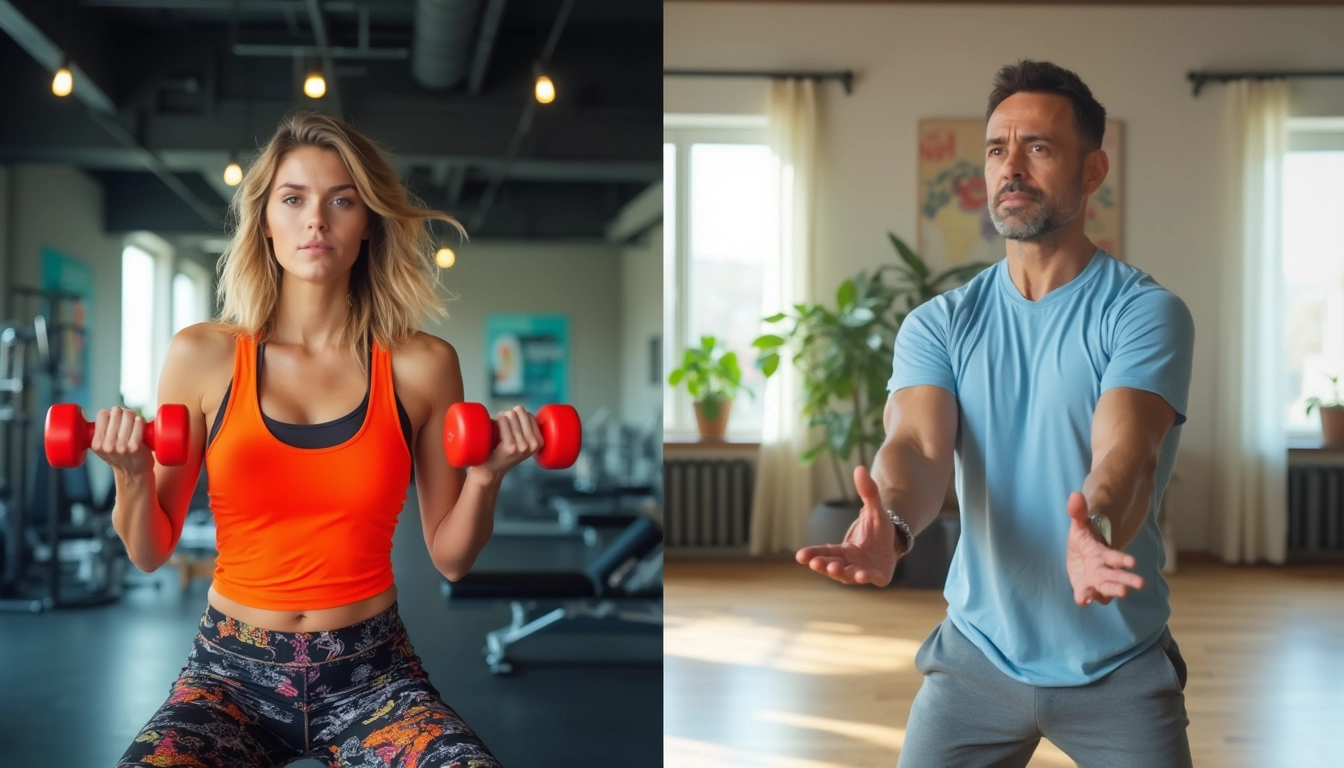
HIIT vs Pilates: Understanding Key Differences for Fitness Goals
When it comes to choosing the right workout, two popular options often come to mind: High-Intensity Interval Training (HIIT) and Pilates. Both offer unique benefits, but they cater to different fitness goals and preferences. Here’s a high-level perspective on what each has to offer.
HIIT is known for its short, intense bursts of activity aimed at boosting cardiovascular fitness and burning calories quickly. On the other hand, Pilates focuses on controlled movements, core strengthening, and flexibility, providing a more holistic approach to body health.
Table of Contents
Key Takeaways
- Workout Intensity: HIIT involves high-intensity intervals pushing the heart rate to 80% of its maximum capacity, while Pilates is a low-impact exercise focusing on controlled movements[1][4].
- Calorie Burn: HIIT is more calorie-intensive, leading to rapid calorie burn and improved cardiovascular fitness, whereas Pilates burns fewer calories but contributes to long-term muscle toning and metabolic boost[1][5].
- Muscle Development: HIIT targets fast-twitch muscle fibers for quicker muscle growth and definition, while Pilates develops both fast and slow-twitch fibers for balanced muscle development[1][4].
- Weight Loss: HIIT is often preferred for weight loss due to its high-intensity intervals and afterburn effect, but Pilates can also contribute to weight loss through muscle gain and improved metabolism[1][5].
- Suitability for Beginners: Pilates offers a gentler introduction with low-impact exercises, while HIIT may require modified sessions for beginners to avoid injury[1][4].
Overview of HIIT and Pilates
High-Intensity Interval Training (HIIT) is a cardiovascular exercise strategy that involves short bursts of intense activity followed by periods of rest or lower-intensity exercises. This method is known for its efficiency in burning calories and boosting metabolism in a short amount of time, typically ranging from 15 to 30 minutes[1][4].
In contrast, Pilates is a low-impact exercise that focuses on strengthening muscles, improving postural alignment, and enhancing flexibility. Created by Joseph Pilates in the 20th century, Pilates exercises are performed in slow, controlled movements, often using body weight or specialized equipment. A typical Pilates session can last from 45 minutes to an hour[1][4].

Workout Intensity and Impact on the Body
HIIT, by its very definition, is a high-intensity workout that pushes the body to its limits. It involves maximum-effort exercises that lead to a rapid heart rate and intense calorie burn. This intensity can be tough on the joints if proper form is not maintained, increasing the risk of injury[1][4].
Pilates, on the other hand, is generally considered a low-impact exercise. It emphasizes controlled movements and proper form, making it gentle on the joints and suitable for injury prevention and rehabilitation. This low-impact nature allows Pilates to be accessible to all ages and fitness levels[1][4].
Quick Results vs Long-Term Benefits
HIIT is known for delivering quick results, including rapid calorie burn and improved cardiovascular fitness within weeks. This is due to its high-intensity intervals that target fast-twitch muscle fibers, leading to enhanced muscle endurance and explosive power[1][4].
Pilates, while not as calorie-intensive, shows gradual results in muscle toning, posture improvement, and overall body health. It focuses on deep core strengthening and alignment, which might not lead to immediate visible results but contributes significantly to long-term body health and shape[1][5].
Mental Focus and Engagement
Pilates promotes a strong mind-body connection, emphasizing mindfulness, body awareness, and breath control. The slow, intentional movements require precise execution, making it a meditative and engaging workout[1][4].
HIIT, however, requires mental toughness to push through the fatigue and intensity of the workout. It demands intense focus during the maximum effort intervals, which can be challenging but rewarding for those who enjoy the high-energy environment[1][4].
Suitability for Beginners
For those new to the fitness world, Pilates can be a more forgiving introduction. Its low-impact nature and focus on controlled movements allow beginners to gradually strengthen their core and improve flexibility without the overwhelming intensity of HIIT[1][4].
HIIT, while effective, can be intense and may not be ideal for beginners. It is advisable for novices to start with modified HIIT sessions and ensure proper recovery time to avoid injury[1][4].
Choosing the Right Workout for You
When deciding between HIIT and Pilates, it’s crucial to consider your personal fitness goals, preferences, and physical condition. If you are looking for a workout that enhances cardiovascular fitness and burns calories quickly, HIIT might be the better choice. However, if you prefer a more holistic approach that focuses on strength, flexibility, and balance, Pilates is an excellent option[1][4].
Experts often recommend combining both methods for a balanced fitness routine. This approach ensures that you work both your cardiovascular and muscular systems, leading to full health benefits. For instance, you could incorporate HIIT for cardiovascular fitness and Pilates for strength, flexibility, and balance[4].
If you’re looking to automate your fitness routine or other aspects of your life, consider using tools like those available on Latenode, which can help you streamline various tasks, including blog posts, social media, and business automations.



One thought on “HIIT vs Pilates: Understanding Key Differences for Fitness Goals”